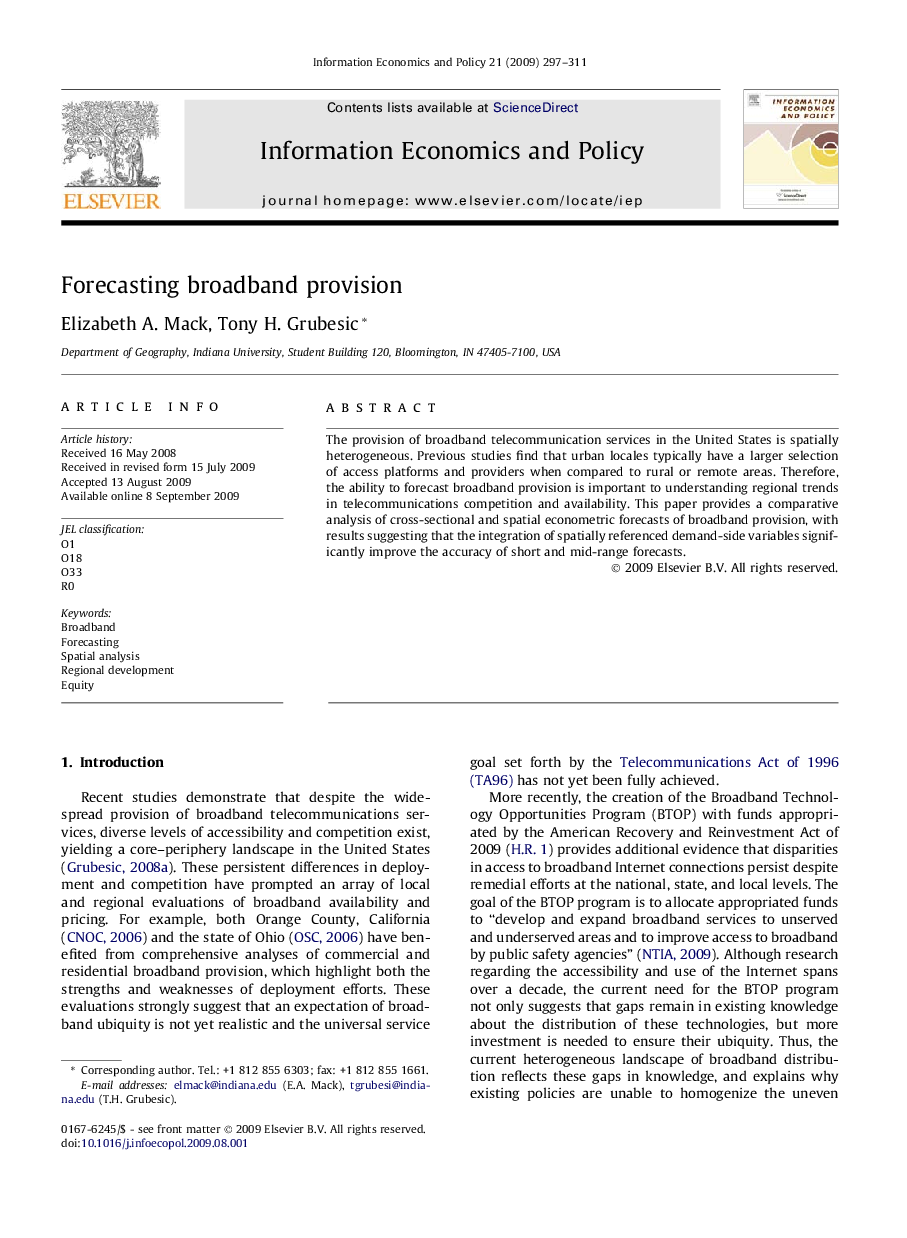| Article ID | Journal | Published Year | Pages | File Type |
|---|---|---|---|---|
| 5075798 | Information Economics and Policy | 2009 | 15 Pages |
Abstract
The provision of broadband telecommunication services in the United States is spatially heterogeneous. Previous studies find that urban locales typically have a larger selection of access platforms and providers when compared to rural or remote areas. Therefore, the ability to forecast broadband provision is important to understanding regional trends in telecommunications competition and availability. This paper provides a comparative analysis of cross-sectional and spatial econometric forecasts of broadband provision, with results suggesting that the integration of spatially referenced demand-side variables significantly improve the accuracy of short and mid-range forecasts.
Related Topics
Social Sciences and Humanities
Business, Management and Accounting
Management of Technology and Innovation
Authors
Elizabeth A. Mack, Tony H. Grubesic,
